
© Foteini Christofilopoulou. (Click image for larger version)
Mariinsky Ballet
Contrasts: Carmen Suite, Infra, Grand Pas from Paquita
★★★✰✰
London, Royal Opera House
8 August 2017
Gallery of Paquita pictures by Foteini Christofilopoulou
mariinsky.ru
www.roh.org.uk
After opening its summer season with a 19th century evocation of Spain in Don Quixote, the Mariinsky Ballet revisited the country in its triple bill of Contrasts. The programme (for two nights only) started with Carmen Suite, created in 1967 for Maya Plisetskaya, defiant star of the Bolshoi; it wasn’t taken into the Mariinsky repertoire until 2010. The evening ended with the Grand Pas from Paquita, staged this year as a new three-act ballet for the company by Yuri Burlaka, former dancer and now repetiteur at the Bolshoi.
In between came Wayne McGregor’s Infra, created for the Royal Ballet in 2008. It’s the one with computer-generated commuters trudging overhead in Julian Opie’s set design. They might be urban Spaniards, if one insists on a linking theme for an otherwise extremely mixed bill.
When Maya Plisetskaya commissioned a Carmen-based ballet from Alberto Alonso, co-founder of the National Ballet of Cuba, she wanted to shake up Soviet ballet conventions. She, Alonso and the composer, Maya’s husband Rodion Shchedrin, were so successful that the one-act ballet was initially banned by the Soviet Minister of Culture. There’s a parallel with the recent blocking of a Bolshoi ballet about Nureyev for much the same reasons: sexually offensive and/or not ready for performance.
Fifty years later, Alonso’s ‘modern’ choreography looks very dated: flexed feet, jutting hips, turned-in positions, flaunted sexuality by men as well as women. Roland Petit had already done it all in his Carmen in 1949. The only reason for the Mariinsky to adopt Carmen Suite must be as a vehicle for a ballerina. In Diana Vishneva, now 41, the company has a tried and tested diva, who can bring a touch of irony to her blatant provocations.
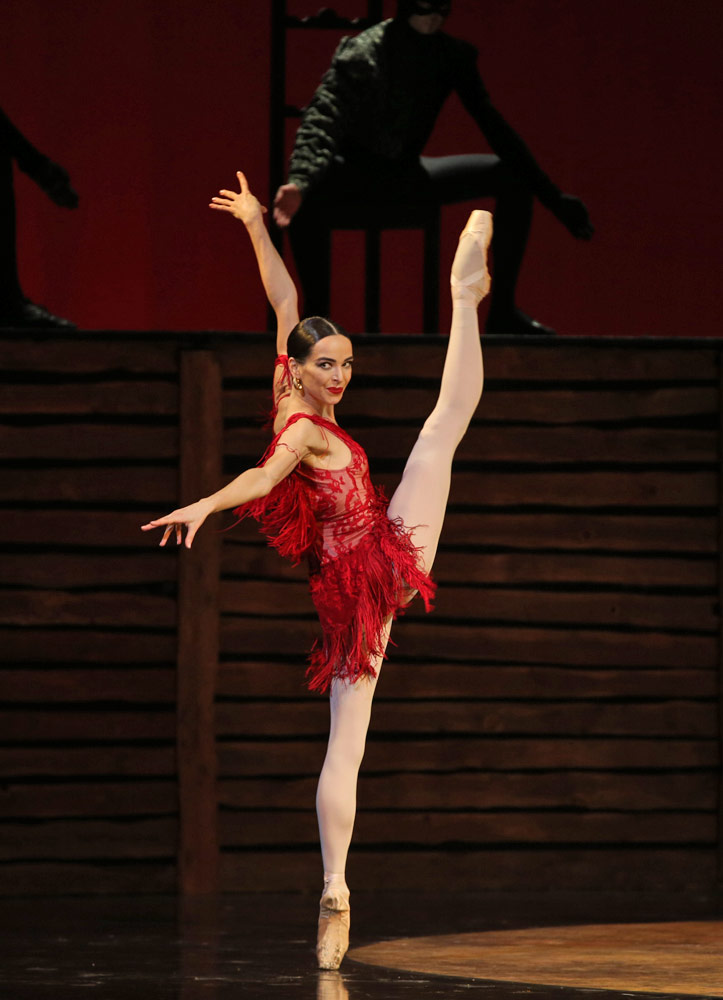
© Natasha Razina. (Click image for larger version)
She swaggers on pointe, flashes her fringed derrière and lethally extends her rapier legs. Poor Don José (Konstantin Zverev) doesn’t stand a chance. She seduces him twice, first as a femme fatale in a crimson dress, then as his passionate lover in black lace. Zverev is upright, classically pure, unlike the rest of the cast of poseurs. The bystanders – soldiers, matadors, cigarette girls – move as angularly as marionettes, marking each beat of Shchedrin’s over-egged music. His arrangement of Bizet’s best-known tunes emphasises each incident in the melodrama, like the score for an animated film.
Bizarrely, the choreography for José’s rival, the bullfighter Escamillo (here called Torero), is much the same as Carmen’s sexy gyrations – yet more bum twitching. Evgeny Ivanchenko cuts a splendid figure in his white suit of lights, and is more concerned with himself than with Carmen. It turns out that he, Carmen and José are but puppets of Fate – Ekaterina Chebykina in a black bodysuit, fingers pointed like daggers, arms held like a bull’s horns. She alternates with Carmen in double pas deux with the two men in the finale till Carmen slumps backward in José’s arms. Dead.
The ballet is such pretentious hokum that not even Vishneva can save it. Who could tell that the three bi-coloured female tobacco workers apparently represent society’s disapproval of Carmen’s free self-expression?
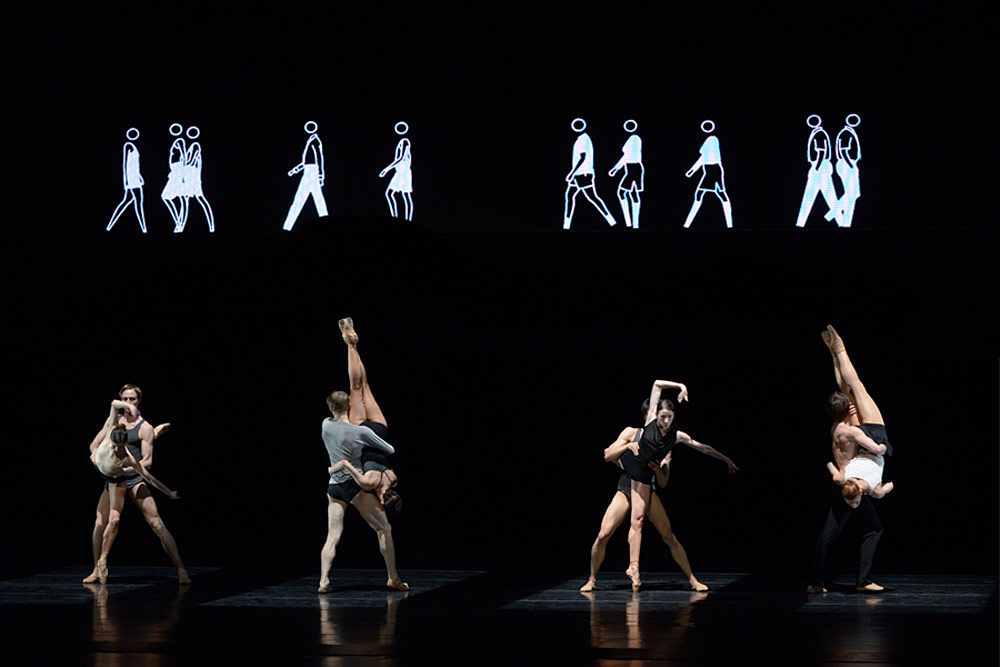
© Valentin Baranovsky. (Click image for larger version)
Infra’s society, represented by Opie’s faceless electronic figures and a passing crowd of extras near the end, is indifferent to what McGregor calls the ‘emotionality’ of twelve scantily-clad dancers. Their couplings are supposed to reveal their (our?) innermost feelings. Most of the duets resemble the tortuous scribbles of a manic animator: it’s left to Max Richter’s music to suggest changes of mood in uneasy relationships.
The exception is a pas de deux with Ekaterina Kondaurova and Andrei Yermakov that reads as a dialogue between real human beings. She seems untrusting, he persists, until he walks off, leaving her bereft. Since Kondaurova has so powerful a stage presence, her breakdown in the midst of the crowd of strangers is all the more affecting. Instead of finishing there, the ballet concludes with a lyrical duet to a violin solo for Kondaurova’s would-be consoler, Anastasia Matvienko, and Alexander Sergeyev. Perhaps it’s a hopeful ending.
The twelve Mariinsky principals and soloists invest McGregor’s contortions with the conviction that they are meaningful. The contrast couldn’t be greater with the Grand Pas that follows – classical dancing with no claim to be anything other than supremely accomplished.

© Foteini Christofilopoulou. (Click image for larger version)
The wedding act from Paquita is usually presented in the form that Marius Petipa adapted for a gala in 1881. He indulged his ballerinas with their favourite solo variations from different ballets, as well as from his full-length Paquita, now lost. Yuri Burlaka’s account, shorn on this tour of the children’s mazurka that starts the celebrations, retains some of the surviving variations, as well as the pas de deux for the central couple, Paquita and Andrés (Vikoria Tereshkina and Vladimir Shklyarov on Tuesday).
New designs by Andrei Sevbo propose a galleried terrace overlooking an orchard in blossom, with side portraits of the King and Queen of Spain in the 1880s. The Spanish brio of some Grand Pas productions, most notably that of the all-male Trocks, has here been subdued: the decorous corps and demi-soloists no longer bounce or flounce (or even keep in unison). Tereshkina, however, combines her bold Kitri from Don Quixote with her Odile to appear the grandest possible imperial ballerina.
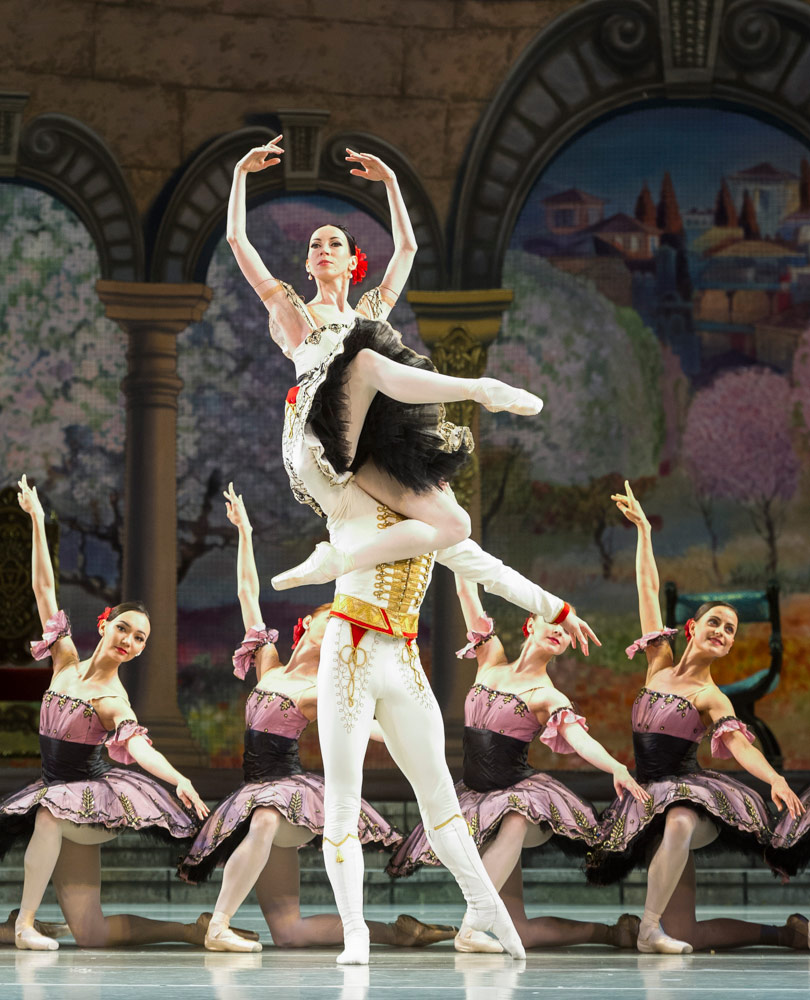
© Foteini Christofilopoulou. (Click image for larger version)
She is technically so confident that she can play with the music – Minkus at his merriest – choosing when to hold her balances, when to perform a slow double pirouette or whip off multiple fouettés. Vladimir Shklyarov makes the most of Andrés’ absurdly heralded entrance, sending up the fact that the character does very little by sporting a moustache, sideburns and boots. But he does get an anachronistic variation by Leonid Lavrovsky to prove that he can actually dance as well as partner.
Petipa’s variations for the female soloists are taken testingly slowly, giving each dancer the chance to show off her particular qualities: Yana Selina’s elegant épaulement, Ekaterina Ivannikova’s elevation, May Nagahisa’s light-footed control of hops on pointe, Nadezhda Batoeva’s immaculately repeated sequence of turns from fifth position. Kondaurova stands out because everything works effortlessly, topped by languid arms extending the music to her fingertips. Almost all the dancers were trained at the Vaganova Academy in St Petersburg, and their fine schooling gleams in Paquita’s highly polished gems.












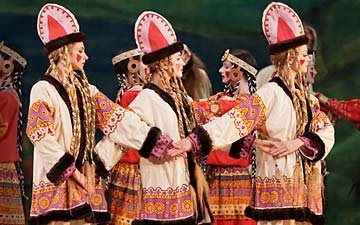

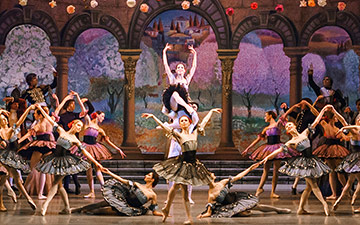

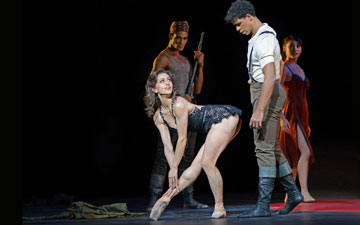
You must be logged in to post a comment.